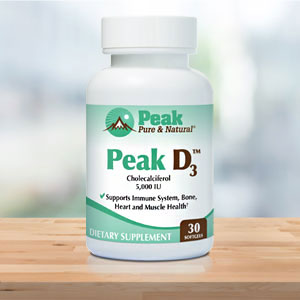I am not a runner and never will be. But I love walking.
I feel more alert after a good, brisk walk, and there’s science that explains why.
Walking also helps me manage my blood pressure, helping to keep my heart healthy as I age.
Plenty of research has shown that walking is ideal for heart disease prevention.
Now we’re learning that your walking pace could count more than how many steps you take, especially if you’re trying to prevent a condition that raises your risk of stroke and heart failure…
What does walking pace have to do with Afib?
Atrial fibrillation, or Afib for short, is a type of heart rhythm disorder. It’s an irregular heartbeat that comes and goes, and it comes with some serious health concerns.
In Afib, the heart’s upper two chambers beat rapidly and irregularly. If not treated, it’s a leading cause of stroke and can also lead to heart failure.
An international team of researchers decided to investigate the relationship between walking speed and Afib since data on this relationship is limited.
To do this, they used self-reported data on the average walking pace of 420,925 UK Biobank participants and a second set of data from 81,956 participants whose walking pace was measured using accelerometers.
Once factors that could skew the results, like smoking, were accounted for, the study found that an average walking pace lowered the risk of all heart rhythm abnormalities by more than a third (35%), while a brisk walking pace slashed the risk by 43%.
For Afib specifically, risk levels were reduced even more: 38% for walking at an average pace and 46% for brisk walking.
The risk of cardiac arrhythmias also dropped by 21% and 39%.
Could you have Afib?
Estimates from UC San Francisco (UCSF) indicate that AFib has been on the rise for the past decade and is believed to affect about 5% of the U.S. population.
According to Dr. Jean Jacques Noubiap, a postdoctoral scholar at UCSF with a specialty in global cardiovascular health, “Atrial fibrillation doubles the risk of mortality, is one of the most common causes of stroke, increases risks of heart failure, myocardial infarction, chronic kidney disease and dementia, and results in lower quality of life.”
But fortunately, lifestyle habits, like brisk walking, could help prevent it, as you’ve just read. What better reason to add a little zip to your walk — shoot for 3 to 4 miles per hour like they did in the study.
Also, get your vitamin D levels checked. A vitamin D deficiency has been associated with higher Afib risk.
Afib is treated with medication, such as blood thinners, but to avoid an event like stroke or heart attack, the earlier the diagnosis, the better. If you’re a woman, be persistent. Most women will have Afib symptoms for over a year before receiving a diagnosis.
If you think you are experiencing Afib or a heart rhythm disorder, let your doctor know. They can help you differentiate between occasional heart palpitations and a potentially life-threatening problem.
With atrial fibrillation, your heartbeat will be very erratic. On the other hand, palpitations speed up your heart, but in a steady pattern, and will slowly return to normal.
Other factors:
- If you are in a tense or anxious situation, you may experience heart palpitations. Under stress, your brain releases hormones that make your heart beat faster. But still, get checked to be sure.
- Consider your age and general health. If you have a thyroid condition, you may be at a greater risk of AFib. The same applies if you are over the age of 65.
- Pay attention to the symptoms. Palpitations caused by AFib typically last longer than those brought on by anxiety. Other symptoms like nausea and sweating may also accompany them.
Sources:
Detail in the way you walk could put you at risk of sudden cardiac death — Daily Mail UK
Faster Walking Pace Cuts Risk for Cardiac Arrhythmias — Clinical Advisor
Read full article here




